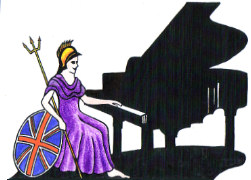Teachers, Accompanists and Piano Entertainers in the UK

UK Piano Page

Houldsworth Business & Arts Centre
Houldsworth Street
Stockport, Cheshire SK56DA
England
Piano House Ltd have been based in the Greater
Woodacre Farm
Warrington Road
Lymm, Cheshire WA139BT
England
As well as a large selection of New and
126 Meadfield Rd
Langley
Langley, Berkshire SL3 7JF
England
Used and new acoustic and digital piano
53 High Street
Berkhamsted, Hertfordshire HP43QH
England
We know that when it comes to pianos, one size
3 Newham Street
Bolton, Greater Manchester BL1 8QA
England
The Music Box was established over 25 years ago to
Music Festival for performers and guests Our 10th
18-06-2022 01:30PM
The Morecambe Bay Piano Group was set up to extend
11-12-2021 02:00PM
The Morecambe Bay Piano Group was set up to extend
08-01-2022 02:00PM
The Morecambe Bay Piano Group was set up to extend
12-02-2022 02:00PM